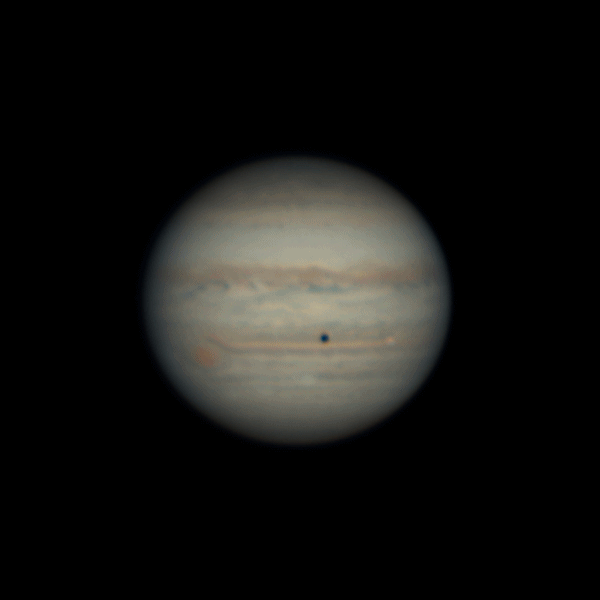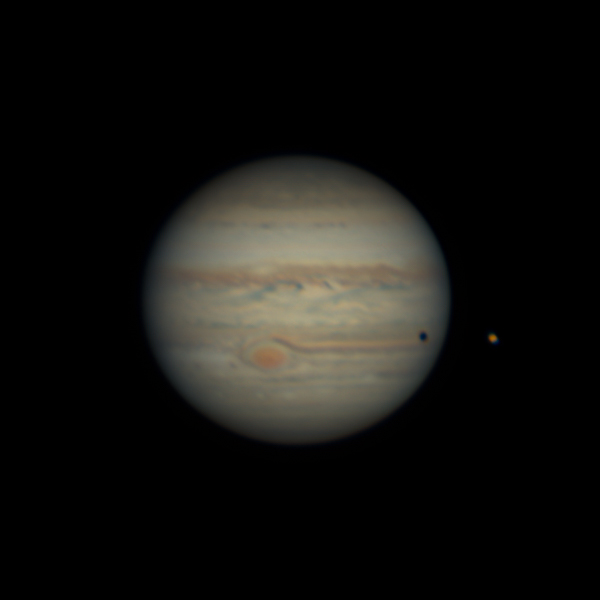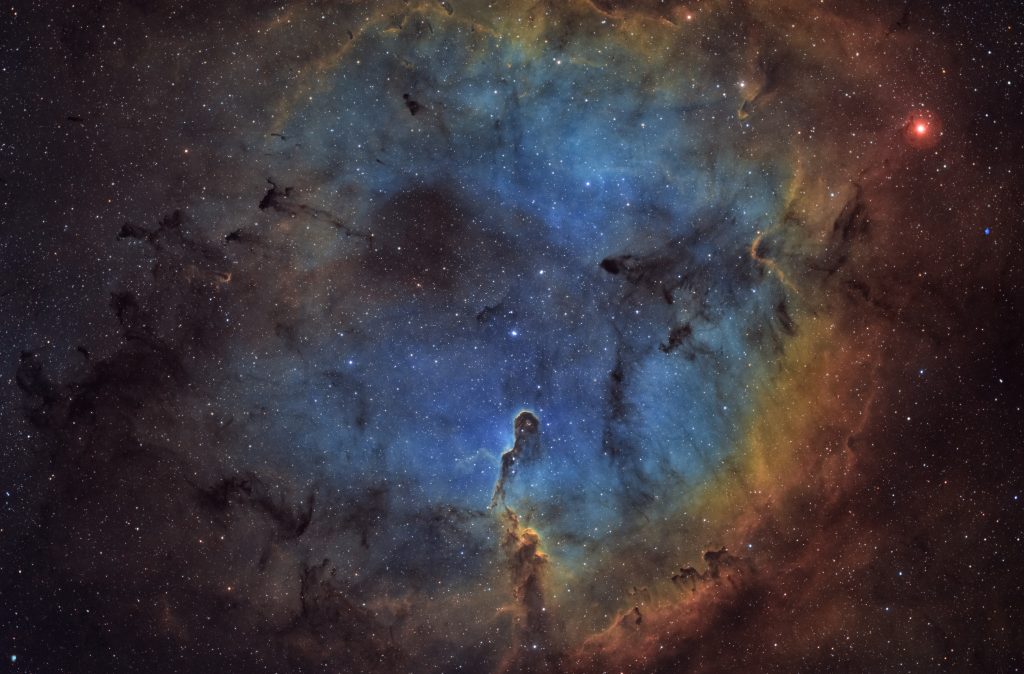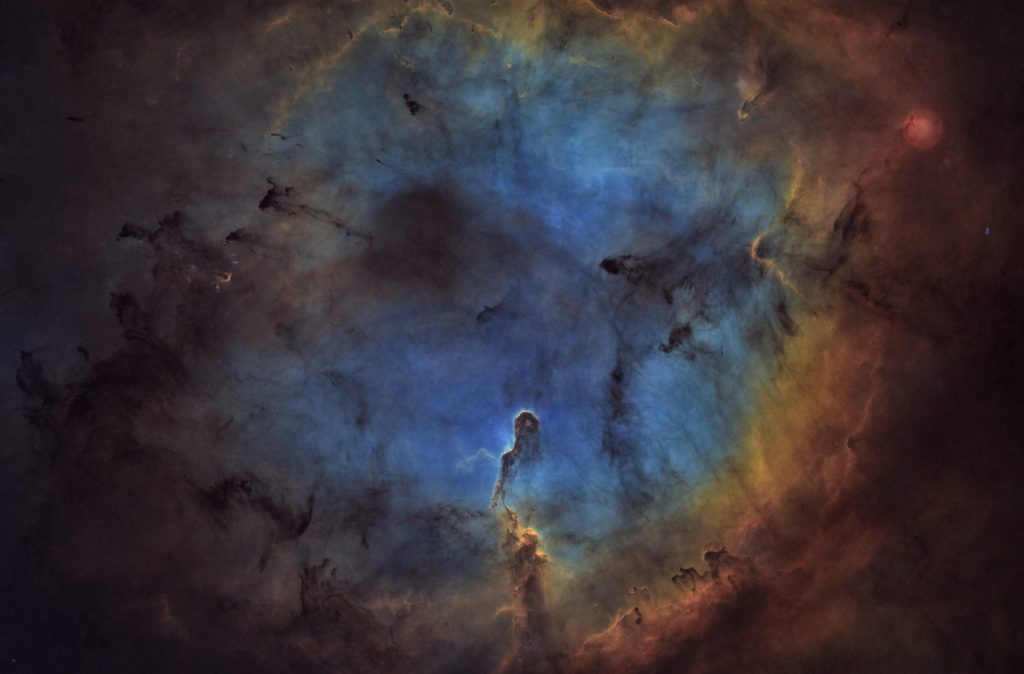October 2022 offered several spectacular astronomical events in the Solar system. Recently I captured the transit of the moon Io across Jupiter and on the 25th a partial solar eclipse occurred. I was ready, the forecast was optimistic, but the clouds were still blocking the sun. Fortunately, a small gap between the clouds occurred and the sun for visible for a short moment. I didn’t hesitate a bit and focused my solar telescope, adjusted the tilter, and the pressure tuner. As soon as the picture acquisition started, the clouds rolled in again. In total, I managed to store only 876 pictures, so I selected 35% best ones and stacked them together.
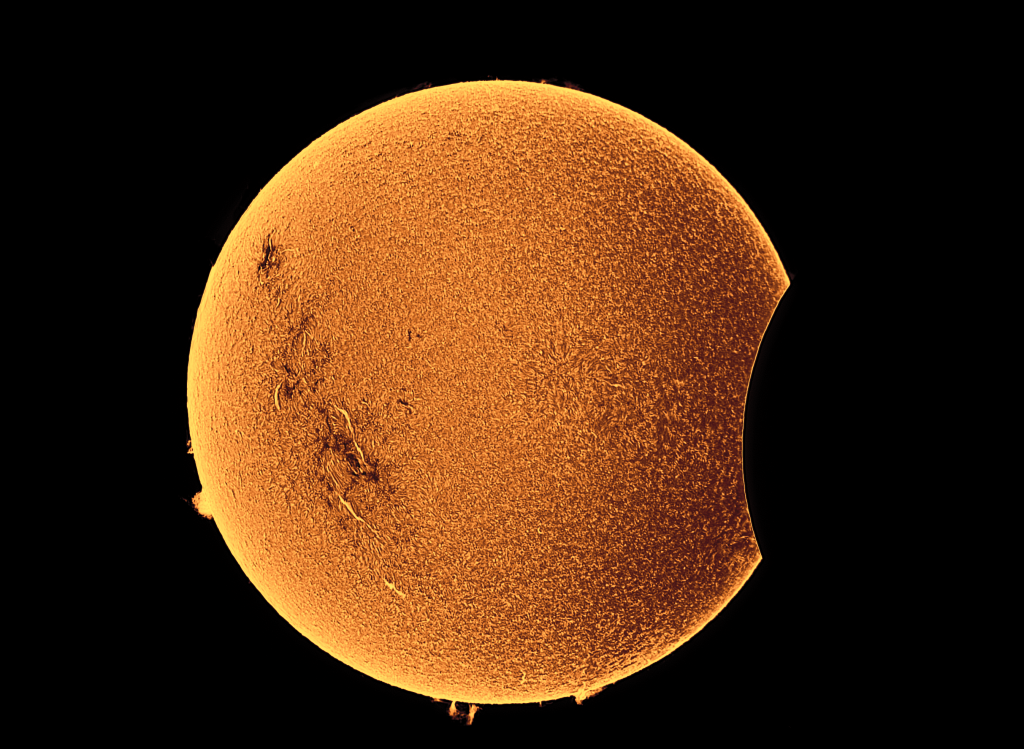
Later on, the clouds cleared completely, so I got the opportunity to capture the sun properly.
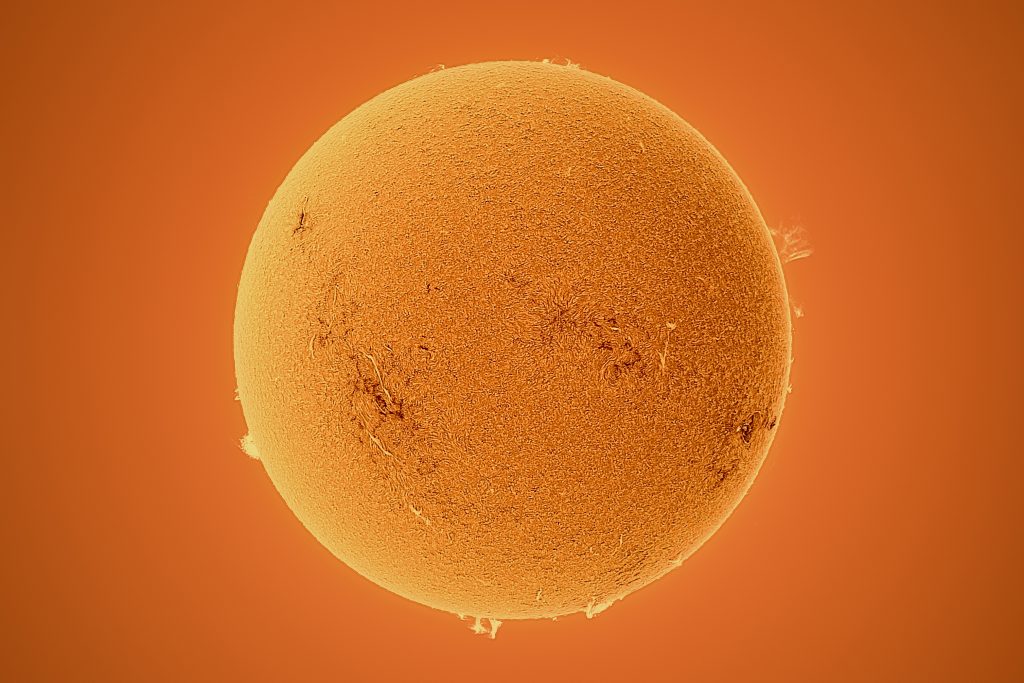
| Telescope | Lunt 60mm |
| Aperture | 60 mm |
| Focal length | 420 mm |
| Mount | Rainbow Astro RST 135 |
| Camera | ZWO ASI 178MM |
| Filters | Double stack |
| Exposure | 4000x17ms, Gain 36, bin 1x1, 33% selected |
| Date | 2022-10-25 |

